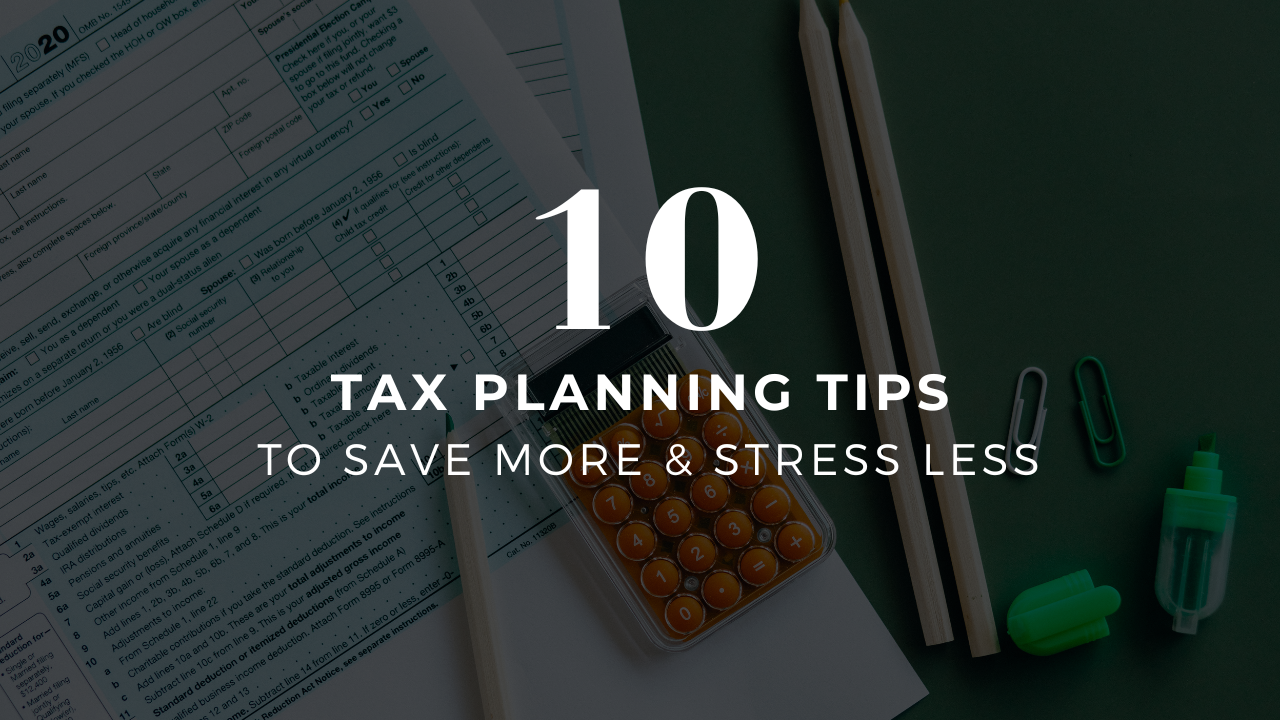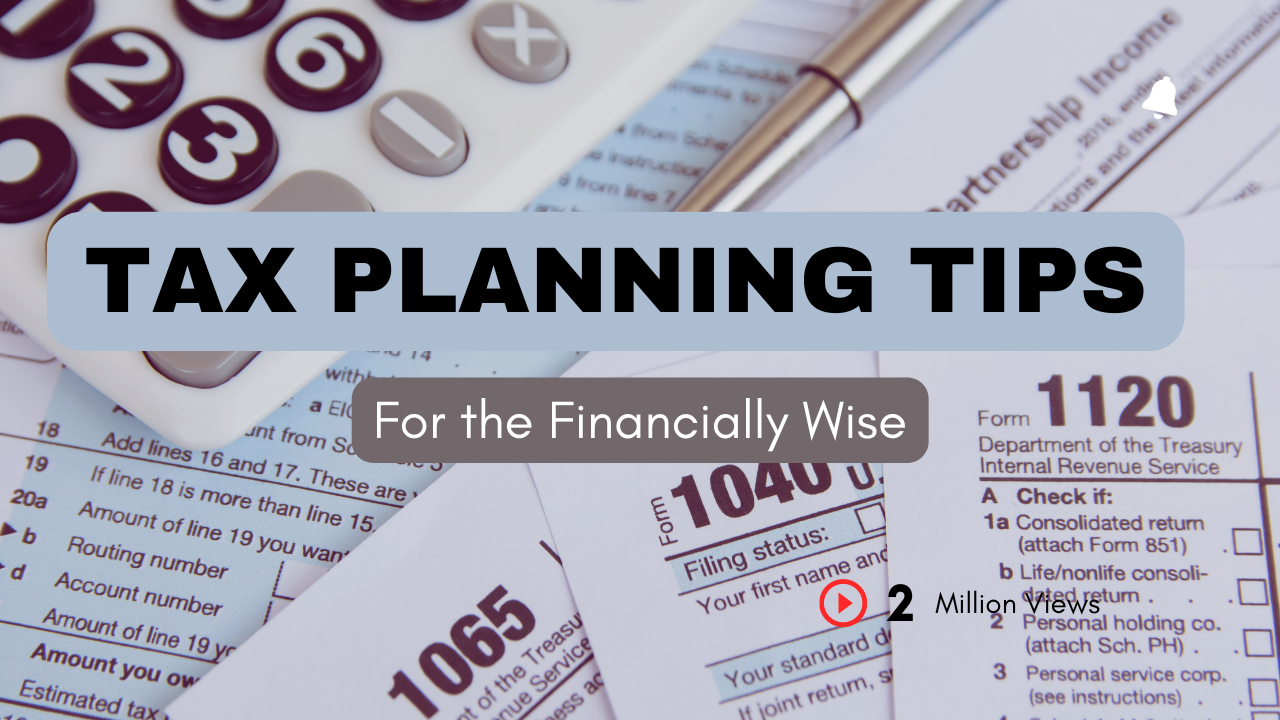10 Tax planning tips to save more and stress less
- Blog
- 10 Tax planning tips to save more and stress less

10 Tax planning tips to save more and stress less
- By Cornerstone Wealth
- March 09, 2023
- 0
Do you want to reduce your taxable income and maximize your deductions but don't know where to start? Look no further! In this blog post, we share 10 top tax planning tips that will help you save more and stress less when it comes to your taxes.

1. Be Strategic with Your Income
How you earn more has a significant impact on your tax burden. Consider the tax implications of different income sources and explore ways to optimize your earnings to minimize taxes. Learn more at the IRS.
2. Start Planning Early
Don't wait until the last minute to start thinking about your taxes. Begin planning as early as possible to give yourself plenty of time to gather all necessary information and documents. Early planning helps avoid last-minute mistakes or oversights that could cost you money. For tips on early tax planning, visit NerdWallet.
3. Review Your Tax Situation
Take a close look at your income, expenses, deductions, and credits to identify areas where you may be able to save. Consider hiring a professional tax advisor to help you with this process. For more information on reviewing your tax situation, check H&R Block.
Access Cornerstone Wealth's FREE 2024 tax reference guide.
4. Keep Good Records
Good record-keeping is essential for tax planning. Keep track of all your income, expenses, and other financial information to ensure accurate reporting on your tax return. This will make it easier to claim deductions and credits and avoid any errors. Learn how to keep good tax records at the IRS.
Need help? Speak to Cindy Meares, Cornerstone Wealth's Director of Tax Services.
5. Maximize Your Deductions
Deductions can reduce your taxable income and save you money on your taxes. Common deductions include charitable donations, mortgage interest, property taxes, and business expenses. Be sure to claim all deductions you are eligible for. For a comprehensive list of deductions, visit the IRS.
6. Take Advantage of Tax Credits
There are many tax credits available that can reduce the amount of tax you owe. Examples include credits for education expenses, energy-efficient home improvements, and childcare expenses. Be sure to take advantage of these credits to lower your tax bill. Learn more about tax credits at the IRS.
7. Use Tax Software
Tax software can simplify the process of preparing your tax return. Many tax software programs are user-friendly and can help you maximize your deductions and credits. For reviews of the best tax software, visit The Top 10.
8. Maximize Your Retirement Contributions
Contributing to a retirement account, such as a 401(k) or IRA, can help reduce your tax burden. Depending on your income and the type of retirement account, contributions may be tax-deductible or grow tax-free until retirement. Find out more about retirement contributions at the IRS.
9. Look into Donor-Advised Funds
Setting up a donor-advised fund (DAF) can provide a tax-efficient way to manage charitable giving. Donating appreciated assets to a DAF allows you to receive an immediate tax deduction for the full market value of the assets and avoid capital gains taxes on the appreciated value. For more on donor-advised funds, visit Investopedia - Donor Advised Funds.
10. Consider a Health Savings Account (HSA)
HSAs are tax-advantaged accounts that allow individuals with high-deductible health plans to save money for medical expenses. Contributions are tax-deductible, and withdrawals for qualified medical expenses are tax-free. By maximizing contributions to an HSA, you can reduce your taxable income and save on taxes. Learn more about HSAs at the IRS.
Ready to take control of your taxes and save more? Implement these 10 essential tax planning tips today and reduce your stress come tax time. For personalized advice tailored to your financial situation, contact Cornerstone Wealth Group now and start optimizing your tax strategy or visit CWG Advisors.
For additional resources watch the Taxwise Talks Webinar with Cornerstone Wealth's Tax Director - Cindy Meares.

This is for informational purposes only and does not serve as personal advice. Please speak to a qualified representative about your unique situation. Investment advisory services offered through Cornerstone Wealth Group, LLC dba Cornerstone Wealth, an SEC registered investment adviser.
Estate Planning for Wealthy Individuals: Securing Your Legacy with Cornerstone Wealth
Elevate Your Wealth Journey with Cornerstone Wealth
Tax Planning Tips for the Financially Wise
Contact Info
- Phone:704-987-3410
- Email: info@cwgadvisors.com
Web: cwgadvisors.com








